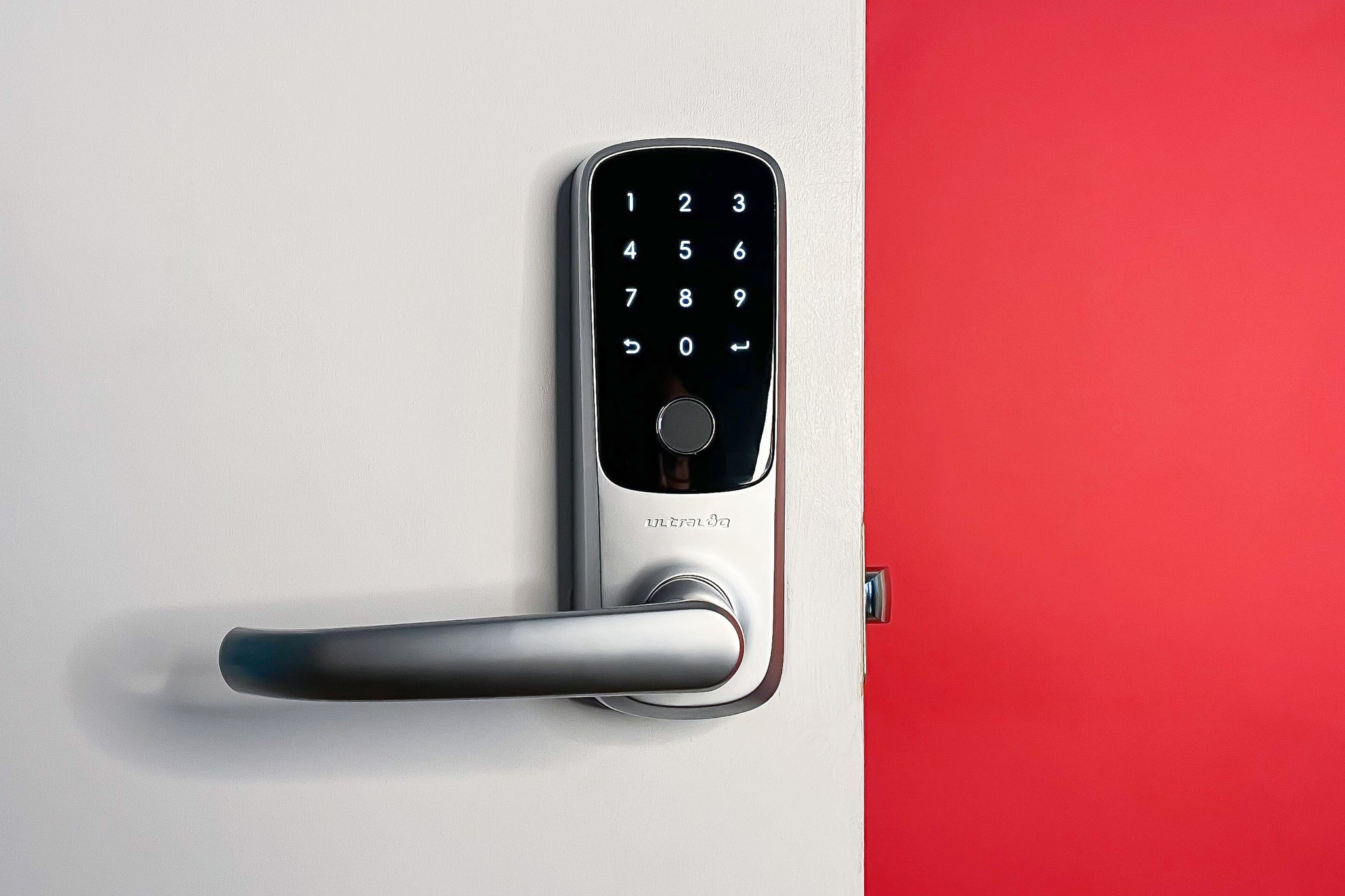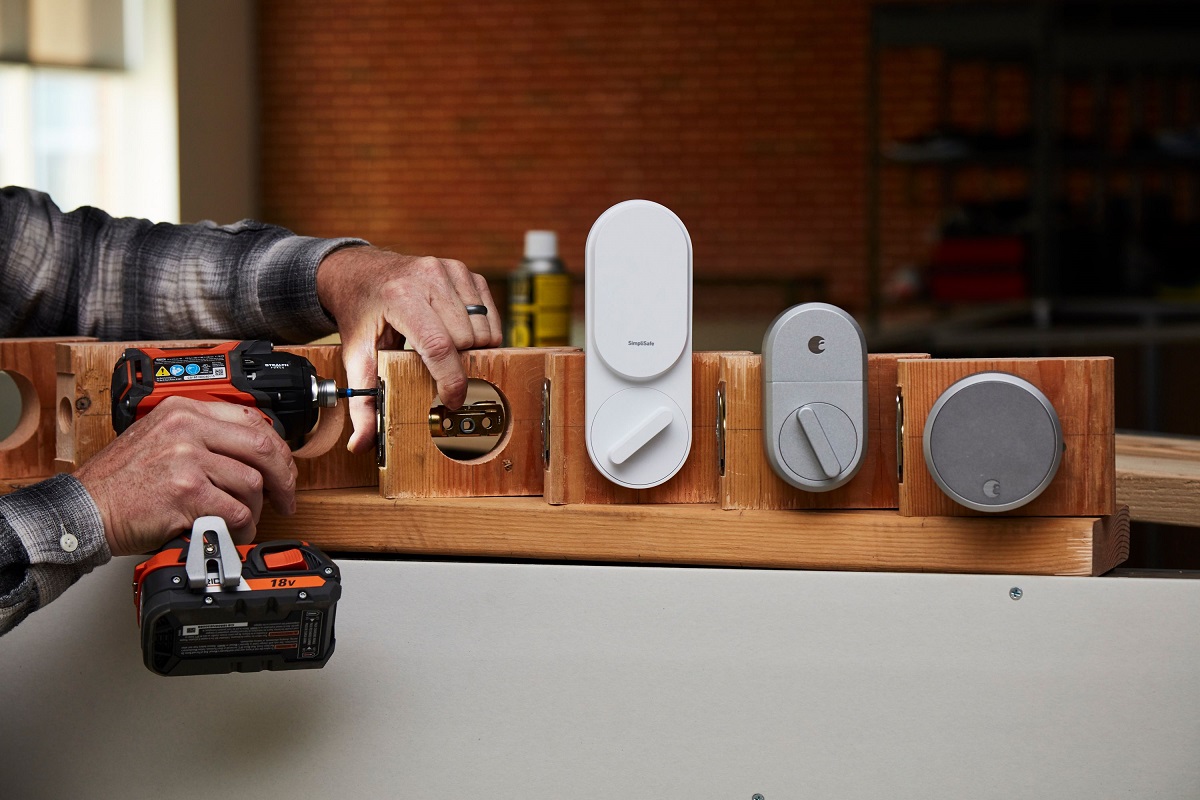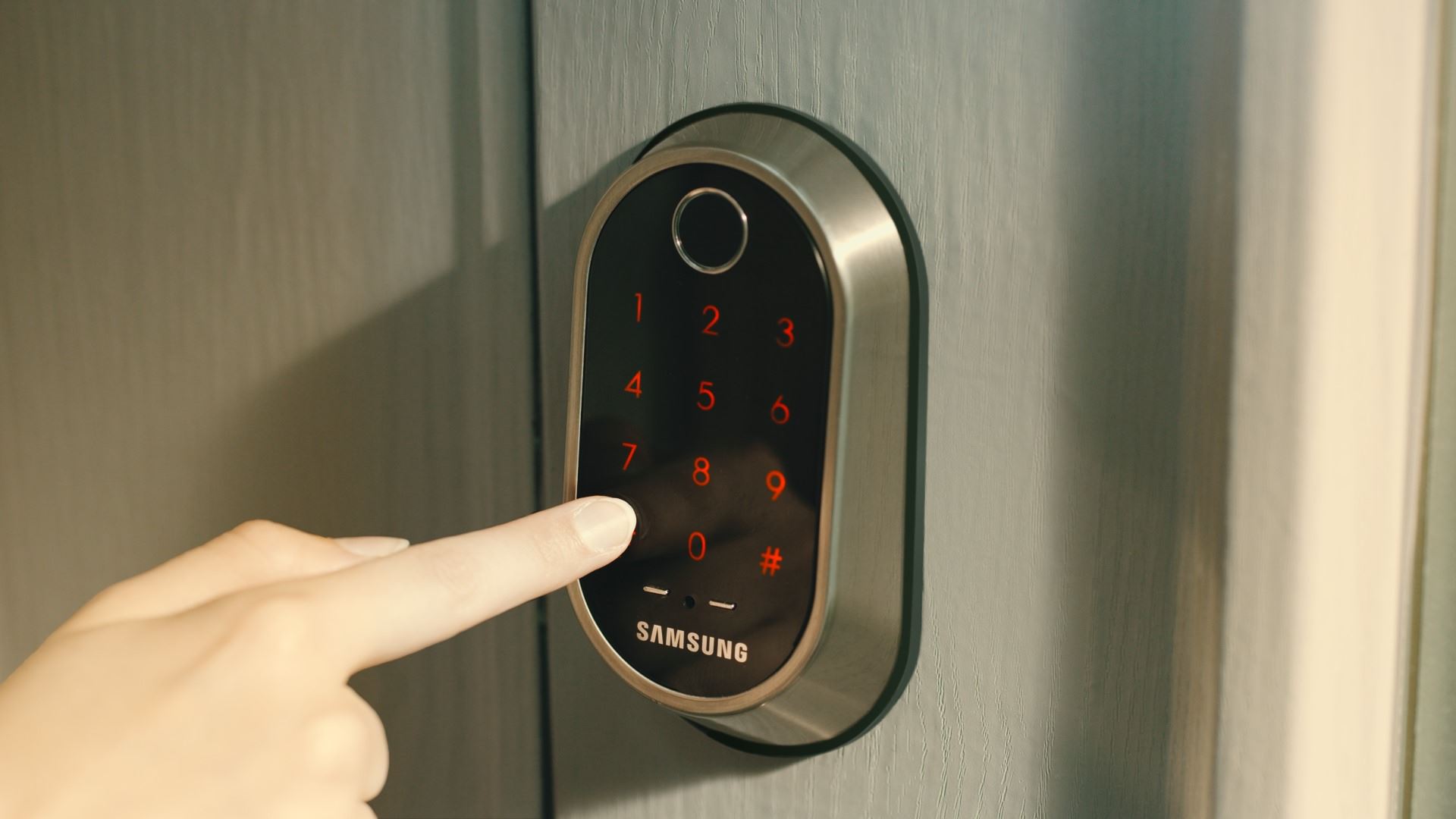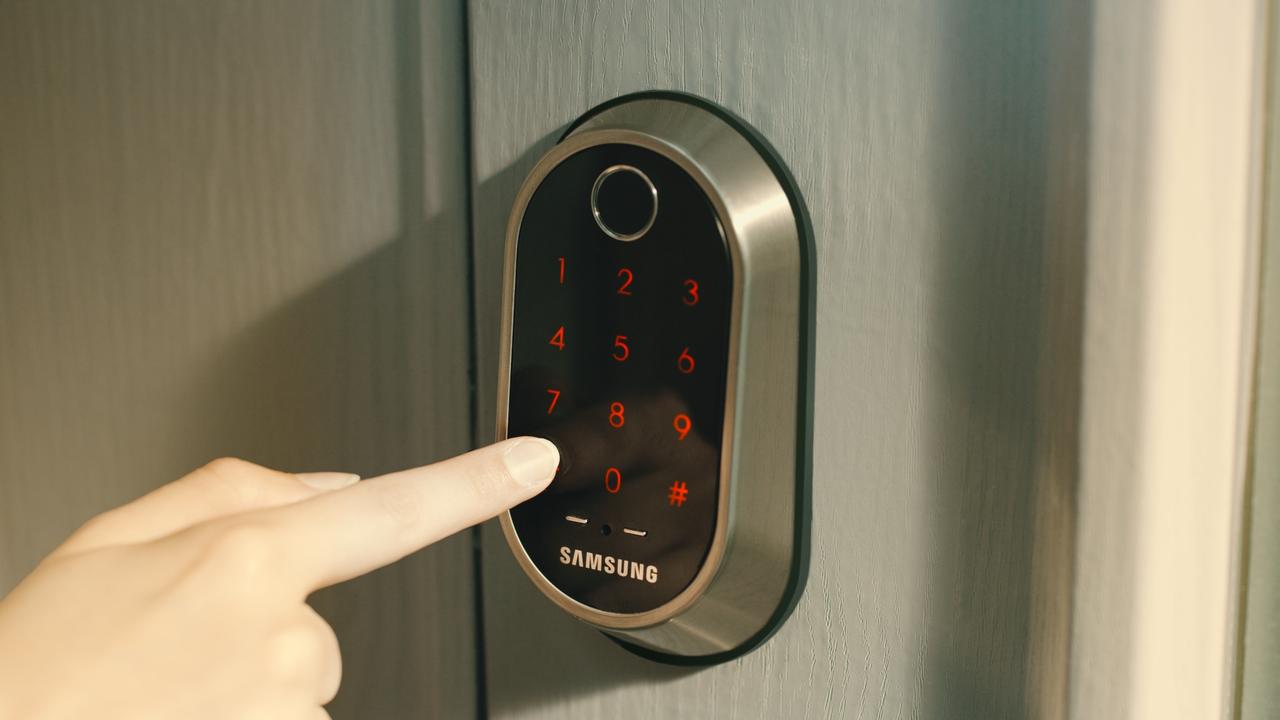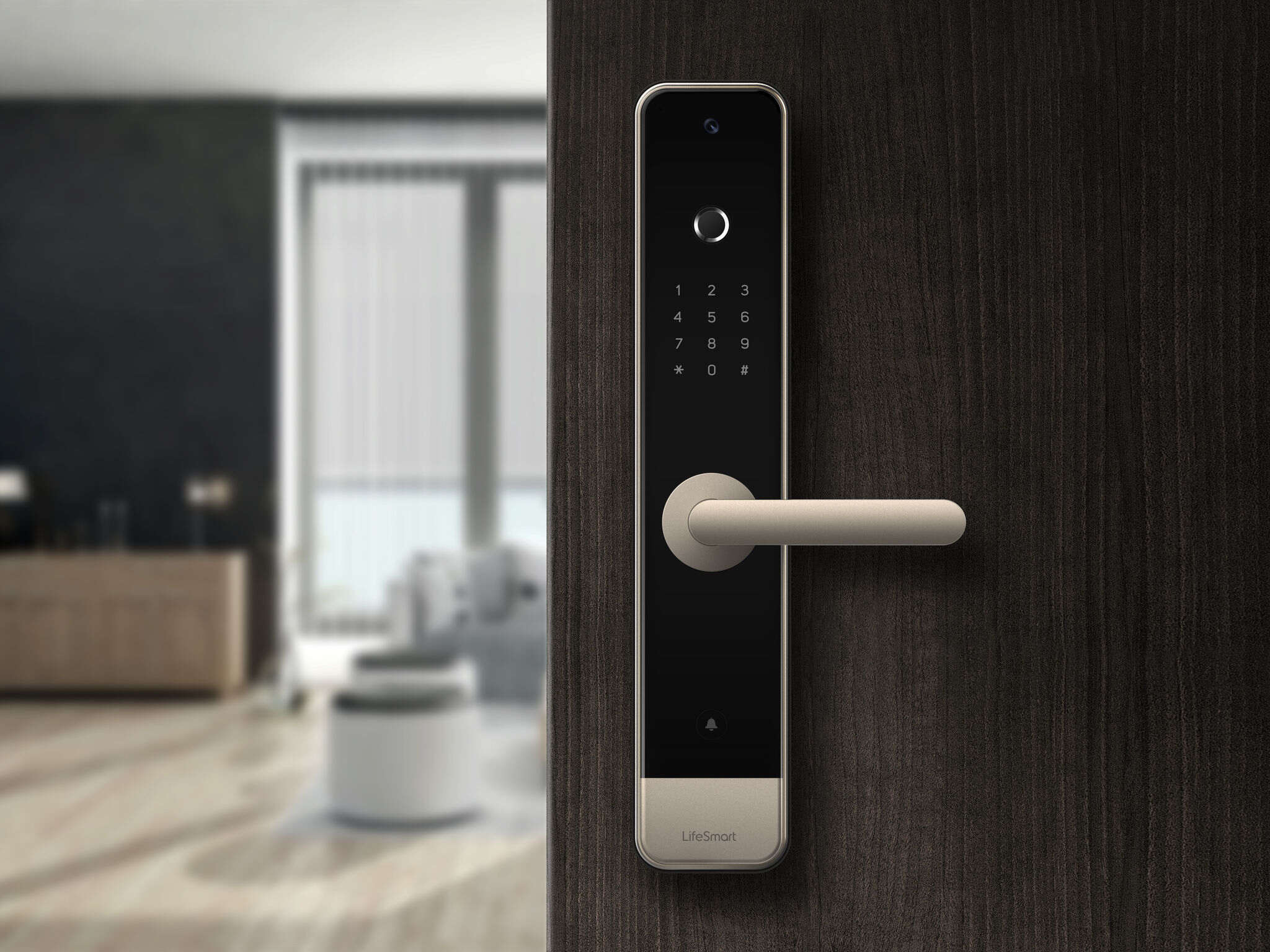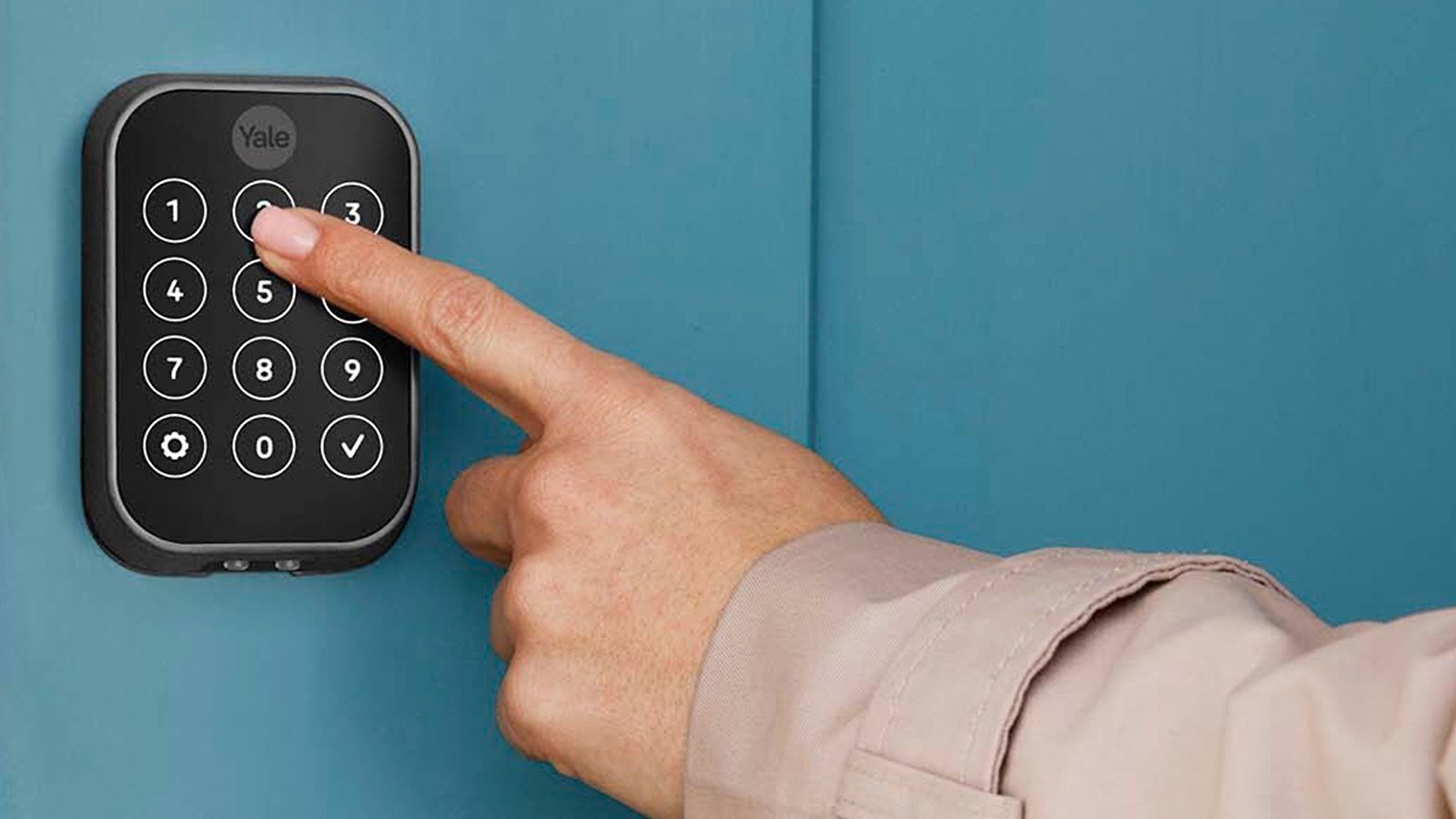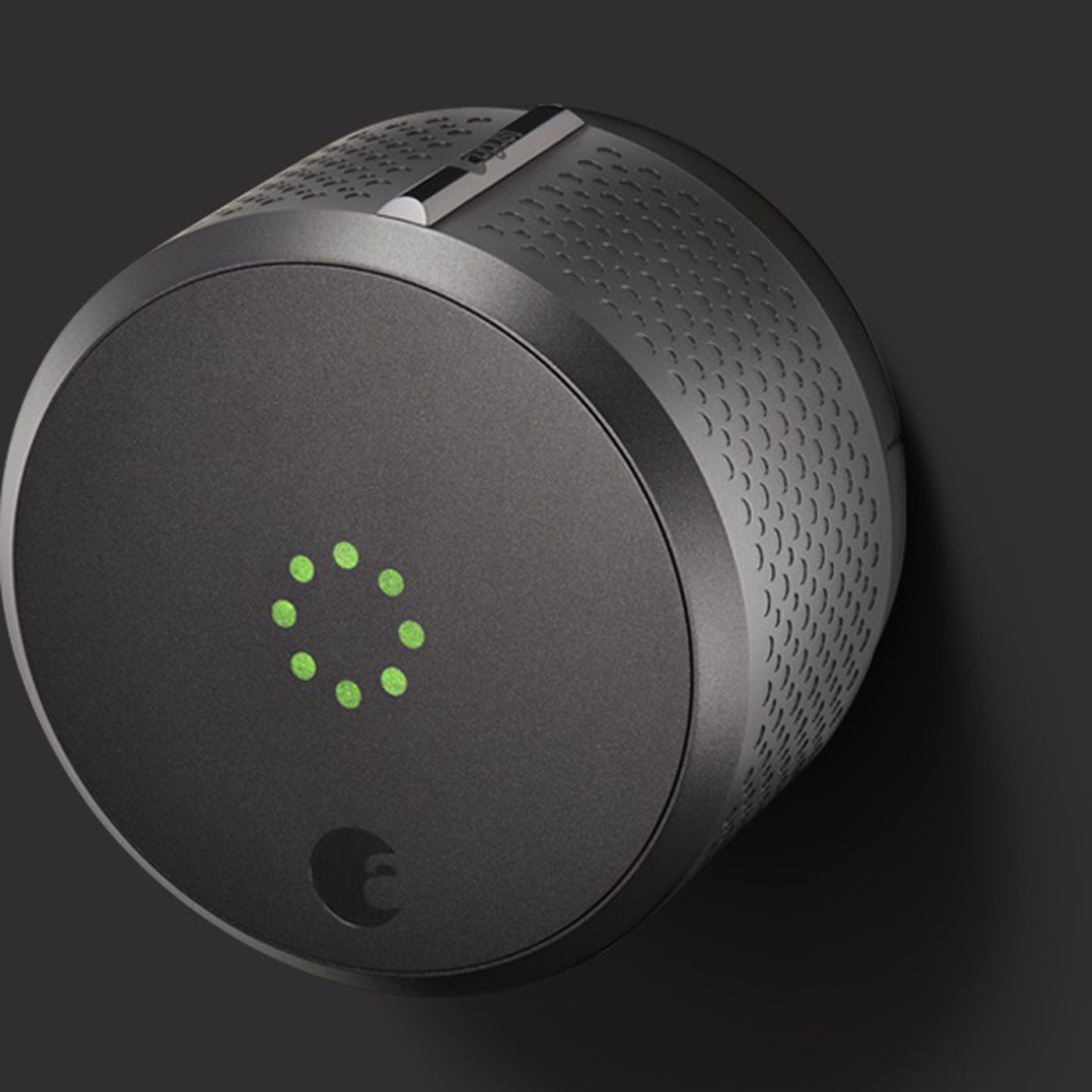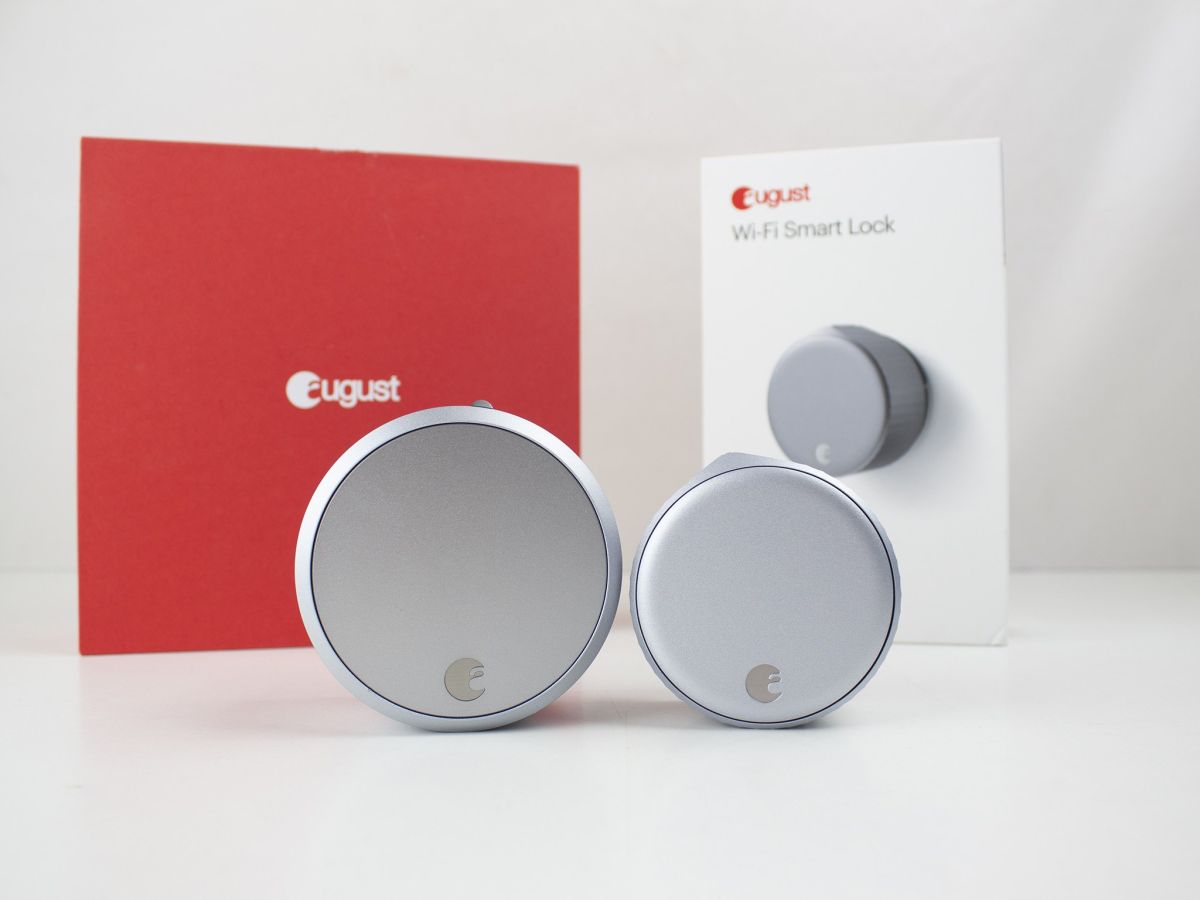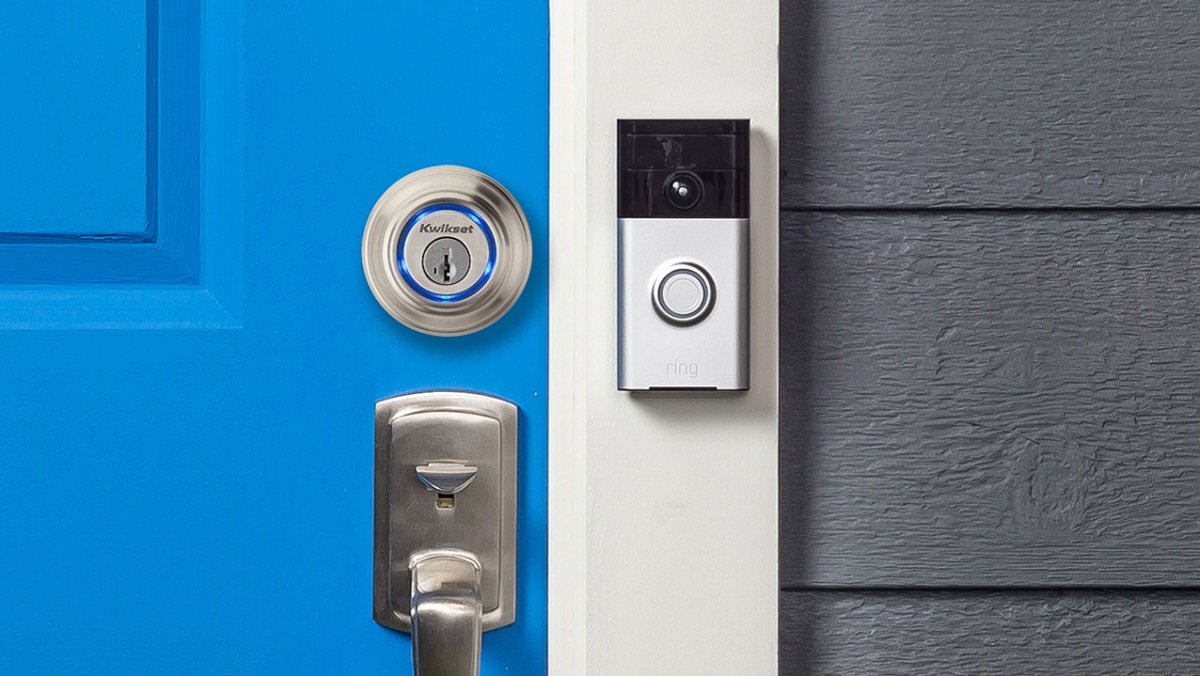Introduction
Welcome to the world of smart home technology, where devices are becoming increasingly integrated into our everyday lives. One such innovation that has gained popularity in recent years is the smart lock. As our lives become more connected and digital, traditional locks are being replaced by these cutting-edge security solutions.
A smart lock is a high-tech replacement for the traditional lock and key system. It combines the convenience of remote access control with advanced security features to provide a seamless and intelligent way to secure your home or office.
In this article, we will explore the concept of smart locks, how they work, and the many benefits they offer. We will also delve into the different types of smart locks available on the market, factors to consider when choosing one, and the installation process. Additionally, we will address common concerns and compare smart locks to traditional locks to help you make an informed decision.
So, whether you are curious about the latest advancements in home security or considering upgrading your locks, this article will provide you with a comprehensive understanding of what smart locks are all about. Let’s dive in!
Definition of a Smart Lock
A smart lock is a technologically advanced device that replaces the traditional physical key and lock mechanism with a digital and connected system. It utilizes wireless technology, such as Bluetooth, Wi-Fi, or Z-Wave, to communicate with a smartphone, tablet, or smart home hub for remote control and monitoring.
Unlike a traditional lock, which requires a physical key to lock or unlock, a smart lock offers multiple ways to access your home or property. This includes using a digital key, such as a PIN code, a fingerprint, or facial recognition, or even voice commands through a virtual assistant like Amazon Alexa or Google Assistant.
With a smart lock, you can easily grant temporary or permanent access to family members, friends, housekeepers, or service providers, without the need to hand them a physical key. Additionally, most smart locks offer a variety of security features, such as activity logs and notifications, to keep you informed about who is entering or leaving your property.
Smart locks bring convenience and flexibility to your property’s security. Instead of fumbling with keys or worrying about losing them, you can quickly and easily lock and unlock your doors using your smartphone or other authorized access methods. This is particularly useful when you have your hands full with groceries or need to let someone in while you’re not at home.
Furthermore, smart locks can integrate seamlessly with other smart home devices and systems. For instance, some smart locks can be connected to your security cameras or alarm systems, allowing for real-time surveillance and alert notifications. You can also create custom automation rules, such as automatically unlocking your front door when you arrive home, enhancing both security and convenience.
Overall, a smart lock provides a modern and streamlined approach to home security, offering convenience, flexibility, and enhanced peace of mind. As the central component of your smart home ecosystem, it revolutionizes the way you manage access to your property.
How Does a Smart Lock Work?
At first glance, a smart lock may seem like a complex piece of technology, but its operation can be simplified into a few key components and processes. Understanding how a smart lock works will give you insight into its functionality and help you make the most of its features.
1. Authentication: When approaching a smart lock, the first step is authentication. This can be done through various methods, including entering a PIN code, scanning a fingerprint, or using facial recognition. Some smart locks also support key cards or tokens for authentication.
2. Communication: Once the user has been authenticated, the smart lock uses wireless technology, such as Bluetooth or Wi-Fi, to communicate with a paired device, typically a smartphone or a smart home hub. This allows for remote control and monitoring of the lock.
3. Encryption: To ensure the security of the communication between the smart lock and the paired device, encryption is used. This means that the data transmitted between the two devices is encoded in a way that can only be understood by authorized parties, keeping your information safe from potential hackers.
4. Control and Access: The paired device acts as the control center for the smart lock. Through a dedicated app or a virtual assistant, users can lock or unlock the door with the tap of a button or a voice command. Some smart locks also offer features like geofencing, where the lock automatically unlocks when the user’s smartphone is within a certain range.
5. Monitoring and Notifications: Smart locks often come with additional features for monitoring and notifications. These include activity logs that record who unlocked or locked the door and when, as well as push notifications or email alerts that notify you when the door is being accessed. This provides you with peace of mind and keeps you informed about any unauthorized entry attempts.
It’s important to note that while smart locks offer convenience and advanced functionality, they can also be operated manually with a traditional physical key in case of emergencies or if the battery of the lock or paired device runs out.
Overall, the seamless integration of authentication, communication, encryption, and control makes smart locks an efficient and secure solution for managing access to your home or property.
Benefits of Using a Smart Lock
Smart locks offer numerous advantages over traditional lock and key systems. They not only provide enhanced security but also bring convenience and flexibility to your daily life. Let’s explore some of the key benefits of using a smart lock.
1. Keyless Entry: With a smart lock, you can say goodbye to fumbling with keys or worrying about lost or stolen keys. A digital key, such as a PIN code, fingerprint, or facial recognition, allows you to easily and securely unlock your door with a simple touch or command on your smartphone or other authorized device.
2. Remote Access: One of the major advantages of smart locks is the ability to control and monitor your lock from anywhere. Whether you’re at work, on vacation, or simply in another room, you can remotely lock or unlock your door, grant access to visitors, or receive notifications of any activity at your doorstep.
3. Temporary Access: Smart locks allow you to provide temporary access to friends, family, or service providers without the need for physical keys. You can easily set up temporary access codes or send digital keys to authorized individuals, and revoke access whenever needed. This is particularly handy for granting access to housekeepers, dog walkers, or Airbnb guests.
4. Activity Monitoring: Many smart locks offer activity logs and notifications, giving you insights into who has entered or exited your home and when. This allows for better security and accountability, as you can easily track any suspicious or unauthorized activity. Some smart locks even provide real-time alerts, adding an extra layer of protection to your property.
5. Integration with Smart Home Systems: Smart locks can seamlessly integrate with other smart home devices and systems. For example, you can set up automation rules to have the lights turn on and the thermostat adjust when you unlock the door. Integration with security cameras or alarm systems also allows for a comprehensive and interconnected home security ecosystem.
6. Enhanced Security Features: Smart locks often come with advanced security features, such as tamper alerts, auto-locking, and built-in alarms. These additional layers of security provide peace of mind, knowing that your home is well protected against potential intruders.
7. Easy Installation and Compatibility: Installing a smart lock is generally straightforward, and most smart locks are designed to be compatible with standard door types and existing deadbolt mechanisms. They are also compatible with various operating systems, such as iOS and Android, making them accessible to a wide range of users.
In summary, smart locks offer a host of benefits, including keyless entry, remote access, temporary access control, activity monitoring, integration with smart home systems, enhanced security features, and easy installation. Embracing this innovative technology can greatly enhance the convenience, security, and overall smart living experience in your home.
Different Types of Smart Locks
Smart locks come in various types, each offering unique features and functionalities. Understanding the different types can help you choose the right smart lock that suits your specific needs and preferences. Let’s explore some of the most common types of smart locks available on the market.
1. Deadbolt Replacement: This type of smart lock replaces the existing deadbolt mechanism on your door, offering a seamless integration with your door and enhancing security. Deadbolt replacement smart locks are typically easy to install and often come with additional features like keyless entry, remote access control, and activity monitoring.
2. Retrofit Lock: Retrofit locks are designed to be installed on the interior side of your door, acting as an add-on to your existing deadbolt. They do not replace the entire lock but provide smart features such as remote access and keyless entry. Retrofit locks are a popular choice for those who want to upgrade their existing locks without altering the exterior appearance of their doors.
3. Lever Handle Lock: Lever handle smart locks are commonly used in commercial properties or homes with accessibility needs. Unlike traditional doorknobs or deadbolts, the lever handle lock features a lever instead of a knob, making it easier to operate for individuals with physical limitations. Lever handle smart locks offer keyless entry and remote access control through various authentication methods.
4. Padlock Smart Lock: Padlock smart locks are designed for applications where portability and versatility are essential, such as securing storage units or gym lockers. These smart locks replace traditional padlocks and offer features like keyless entry and remote monitoring. They can be controlled using a smartphone app and provide enhanced security through encryption and access logs.
5. Mortise Lock: Mortise smart locks are commonly found in commercial buildings and high-security applications. Unlike deadbolts, mortise locks require a pocket or “mortise” to be cut into the door for installation. These smart locks offer advanced security features, including multi-factor authentication and integration with access control systems.
6. Keypad Lock: Keypad smart locks are a popular choice for residential properties. These locks feature a built-in keypad on the exterior of the door, allowing users to enter a unique PIN code for access. Keypad locks offer keyless entry and are often equipped with additional features like temporary access codes and activity monitoring.
7. Biometric Lock: Biometric smart locks use fingerprints, facial recognition, or iris scanning as the primary means of authentication. These locks offer high-security measures and provide a convenient and touchless way to unlock doors. Biometric locks are commonly used in commercial and high-end residential applications.
When choosing a smart lock, consider factors such as the type of door you have, the level of security needed, the ease of installation, and the compatibility with other smart home devices. Understanding the different types of smart locks will help you make an informed decision and find the perfect smart lock for your home or business.
Features to Consider When Choosing a Smart Lock
As you delve into the world of smart locks, it’s essential to consider certain features and factors to ensure that you select the right smart lock for your needs. From security measures to convenience-enhancing functionalities, here are key features to consider when choosing a smart lock:
1. Security: The primary function of a smart lock is to provide enhanced security. Look for features like advanced encryption, tamper alerts, auto-locking, and two-factor authentication. Ensure that the smart lock meets industry standards for security, such as ANSI/BHMA Grade or UL certification.
2. Authentication Methods: Consider the authentication methods offered by the smart lock. Popular options include PIN codes, fingerprint recognition, facial recognition, and key cards. Choose a smart lock that offers authentication methods that you are comfortable using and that align with your security preferences.
3. Remote Access: Check if the smart lock offers remote access capabilities. This allows you to control and monitor the lock from anywhere using a smartphone app or a compatible smart home system. Remote access enables convenient locking and unlocking, granting access to guests, and receiving real-time notifications.
4. Integration Capabilities: Consider whether the smart lock can integrate with other smart home devices or systems. Compatibility with platforms like Amazon Alexa, Google Assistant, or Apple HomeKit enhances the overall smart home experience. Integration may allow you to create automation rules or control the smart lock through voice commands.
5. Battery Life: Smart locks are powered by batteries, so it’s important to consider the battery life. Look for a smart lock that has long battery life or offers low-battery notifications to ensure that you don’t get locked out due to a dead battery. Some smart locks even have backup power options, such as a physical key slot or a rechargeable battery.
6. Installation and Compatibility: Check if the smart lock is compatible with your existing door and lock setup. Consider whether you prefer a smart lock that requires professional installation or one that is designed for easy do-it-yourself installation. Ensure that the smart lock comes with clear installation instructions and user-friendly setup processes.
7. User Management: Evaluate the user management capabilities of the smart lock. Look for features that allow you to create and manage multiple user profiles, set custom access schedules, and revoke access remotely. This is particularly useful for granting temporary access to guests or service providers.
8. Data Security and Privacy: Considering that smart locks deal with sensitive access control data, it is crucial to choose a smart lock from a reputable manufacturer that prioritizes data security and privacy. Look for smart locks that employ strong encryption protocols and have transparent privacy policies.
By evaluating the above features, you can select a smart lock that aligns with your security needs, offers the convenience you desire, and integrates seamlessly into your smart home ecosystem. Remember to prioritize the features that are most important to you and consider the specific requirements of your home or business.
Installation and Setup Process
The installation and setup process of a smart lock can vary depending on the specific model and manufacturer. However, most smart locks are designed to be user-friendly, allowing for easy installation without the need for professional assistance. Here are the general steps you can expect when installing and setting up a smart lock:
1. Gather the Necessary Tools: Before you begin the installation, gather the tools required for the job. Typically, you will need a screwdriver, a tape measure, and possibly a drill if you need to make any modifications to your door. Check the manufacturer’s instructions for a complete list of recommended tools.
2. Prepare the Door: Ensure that your door is properly prepared for the smart lock installation. This may involve removing any existing locks or deadbolts that the smart lock will replace. Follow the specific instructions provided by the manufacturer to ensure a smooth installation process.
3. Install the Smart Lock: Follow the step-by-step instructions provided by the manufacturer to install the smart lock. This typically involves attaching the locking mechanism to the door using the provided screws. Make sure the lock is aligned properly and securely mounted according to the manufacturer’s guidelines.
4. Connect to Power: Depending on the smart lock model, you may need to connect it to a power source. This is usually done by inserting batteries into the lock. Some smart locks may have the option of using a rechargeable battery or connecting to a power outlet through an adapter.
5. Connect to a Smart Home Hub or Smartphone: To fully unlock the smart lock’s advanced features, you may need to connect it to a smart home hub or your smartphone. This is typically done through a wireless connection, such as Bluetooth or Wi-Fi. Follow the instructions provided with the smart lock to pair it with the desired device or hub.
6. Set Up User Access: Once the smart lock is installed and connected, you can begin setting up user access. This includes creating user profiles, assigning PIN codes or fingerprints, and determining access permissions. Most smart locks offer an accompanying mobile app or web portal where you can manage user access settings.
7. Test and Calibrate: After completing the installation and setup process, conduct thorough testing to ensure that the smart lock is functioning properly. Test each authentication method, such as PIN codes or fingerprints, to ensure they grant access as intended. If necessary, follow the manufacturer’s instructions to calibrate the lock for optimal performance.
8. Follow Additional Setup Steps: Depending on the specific smart lock model and manufacturer, there may be additional setup steps or customization options. These can include configuring automation rules, setting up activity notifications, or integrating the smart lock with other compatible devices in your smart home ecosystem.
It’s important to carefully read and follow the manufacturer’s instructions throughout the entire installation and setup process. If you encounter any difficulties or have questions, refer to the manufacturer’s support resources or contact their customer service for assistance. Proper installation and setup will ensure that your smart lock functions efficiently and provides the desired level of security and convenience.
Possible Drawbacks and Concerns with Smart Locks
While smart locks offer a range of benefits and convenience, it’s important to be aware of potential drawbacks and concerns associated with this technology. Understanding these drawbacks will help you make an informed decision and take necessary precautions. Here are some common concerns related to smart locks:
1. Power Outages: Smart locks rely on power to operate, whether from batteries or a connected power source. In the event of a power outage or drained batteries, you may be unable to lock or unlock your door using the smart lock. It’s essential to have a backup plan in place, such as a physical key or alternative entry method, to prevent being locked out during a power failure.
2. Connectivity Issues: Smart locks rely on wireless technology, such as Bluetooth or Wi-Fi, for remote access and control. Connectivity issues, such as poor signal strength or network outages, can hinder the operation of the smart lock. It’s important to ensure that your home’s Wi-Fi network is reliable and that the lock is within range of the network to ensure consistent connectivity.
3. Vulnerability to Hacking: As with any connected device, there is a potential risk of hacking or unauthorized access to your smart lock. It’s crucial to choose a reputable manufacturer that prioritizes data security and constantly updates their firmware to address any vulnerabilities. Regularly update the smart lock’s firmware and implement proper security measures, such as using strong, unique passwords, to mitigate the risk of hacking.
4. Limited Compatibility: Not all smart locks are compatible with all types of doors. Before purchasing a smart lock, ensure that it is compatible with your specific door type and the existing deadbolt mechanism. Additionally, check if the smart lock works with your preferred smart home platform or integration with other devices, as compatibility limitations can restrict the functionality and convenience of the smart lock.
5. Malfunction or Technical Issues: Although rare, smart locks can experience malfunctions or technical issues. These issues may include sensors failing to recognize authorized fingerprints or PIN codes, motorized mechanisms becoming stuck or unresponsive, or the lock losing connection with the companion app or smart home hub. Regularly check for firmware updates and contact the manufacturer’s customer support if you encounter any technical issues or malfunctions.
6. Cost: Smart locks can be more expensive than traditional locks. The additional features and technology come at a higher price point. It’s important to consider your budget and the value that a smart lock will bring to your home or property. However, it’s worth noting that the added convenience, security, and integration capabilities may justify the higher cost for many users.
7. Dependence on Batteries: Smart locks require batteries to operate, and their lifespan can vary. Regularly replacing or recharging batteries is necessary to ensure smooth operation and prevent unexpected lockouts. Battery life can be affected by factors such as usage frequency, temperature, and the quality of batteries used. It’s advisable to keep spare batteries on hand and to monitor battery levels for optimal performance.
By being aware of these potential drawbacks and concerns and taking appropriate measures to address them, you can ensure that your smart lock provides the desired level of security and convenience without compromising your home’s overall safety and accessibility.
Comparison to Traditional Locks
When considering whether to upgrade to a smart lock, it can be helpful to compare them to traditional locks to understand the differences and benefits. Here are some key points to consider when comparing smart locks to traditional locks:
1. Convenience: Smart locks offer a higher level of convenience compared to traditional locks. With smart locks, you can easily lock or unlock your door using various methods like PIN codes or your smartphone, eliminating the need for physical keys. This is especially helpful when your hands are full or when you need to provide access to others remotely.
2. Remote Access: One of the significant advantages of smart locks is their ability to be controlled remotely. Traditional locks require you to physically be present to lock or unlock the door. With smart locks, you can use your smartphone or smart home hub to control the lock from anywhere, providing convenience and peace of mind.
3. Enhanced Security Features: While traditional locks offer basic security, smart locks come with additional security features. They often incorporate encryption, two-factor authentication, and tamper alerts to enhance the overall security of your home. Smart locks also provide activity monitoring and notifications, allowing you to keep track of who enters and exits your property.
4. Access Control: Smart locks offer more granular control over who can access your property. You can easily grant or revoke access to individuals remotely, set up temporary access codes, and receive notifications when someone uses the lock. This level of access control is not possible with traditional locks, which usually require physical keys to be shared.
5. Integration with Smart Home Systems: Smart locks can integrate seamlessly with other smart home devices and systems. They can work in conjunction with security cameras, alarm systems, and virtual assistants, like Amazon Alexa or Google Assistant. This integration allows for a comprehensive home security ecosystem, where devices work together to enhance your safety and convenience.
6. Maintenance and Upgrades: Traditional locks may require regular maintenance and occasional rekeying, especially if keys are lost or compromised. In contrast, smart locks have minimal maintenance needs. Firmware updates can be performed wirelessly, and you can easily modify access codes or permissions as needed without changing physical locks or keys.
7. Compatibility and Flexibility: Traditional locks have limited compatibility and are designed for specific door types and lock mechanisms. Smart locks, on the other hand, are often compatible with a range of door types and existing deadbolt mechanisms. This flexibility allows for easier installation and integration with different architectural styles and homeowner preferences.
In summary, smart locks offer convenience, remote access control, enhanced security features, advanced access control, integration with smart home systems, reduced maintenance needs, and compatibility with a wider range of door types. While traditional locks serve their basic purpose, smart locks provide a more sophisticated and seamless solution to home security and access control.
Conclusion
Smart locks have revolutionized the concept of home security, offering convenience, advanced features, and peace of mind. By replacing traditional locks with smart locks, you can enjoy keyless entry, remote access control, and enhanced security measures.
Throughout this article, we explored the definition of smart locks and how they work. We discussed the benefits of using smart locks, such as keyless entry, remote access, and temporary access control. We also examined the different types of smart locks available, including deadbolt replacements, retrofit locks, lever handle locks, padlock smart locks, mortise locks, keypad locks, and biometric locks.
Additionally, we highlighted important features to consider when choosing a smart lock, such as security measures, authentication methods, remote access capabilities, compatibility, and installation requirements. We also addressed potential drawbacks and concerns, such as power outages, connectivity issues, vulnerability to hacking, and cost.
Furthermore, we compared smart locks to traditional locks and highlighted the advantages of smart locks, including convenience, remote access, enhanced security features, access control, integration with smart home systems, and reduced maintenance needs.
In conclusion, smart locks offer a modern and intelligent solution for securing your home or office. They provide convenience, flexibility, and advanced security features that traditional locks cannot match. However, it’s crucial to carefully consider your specific needs, conduct thorough research, choose a reputable manufacturer, and follow proper installation and security practices to maximize the benefits of a smart lock.
With the right smart lock, you can take control of your home security effortlessly and enjoy the peace of mind that comes with knowing your property is protected by cutting-edge technology.







